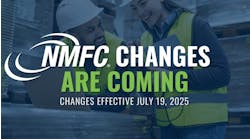A freight recession is top of mind for every carrier. The natural reaction is to cut costs across the board, yet this would only create more problems due to the industry-wide challenge of driver turnover.
Large fleet turnover currently hovers around 89%, and smaller fleets are at 73%. Even private fleets are posting record-high turnover. Research shows that fleets' average cost per lost driver is $8,300. The price tag stings more, with the ATA estimating a driver shortage of 64,000 this year despite a slowing economy.
Clearly, investing in driver retention is an area where fleets cannot afford to cut back.
And regarding pay, they haven't. Driver wages are up 18% since 2019. Yet bigger salaries have done little to move the turnover needle. Neither has four- or five-figure sign-on bonuses. But drivers are motivated by more than money. Job quality, company culture, communication, and relationships with dispatch also rank high on their reasons for staying or leaving.
Better technology enables some of the best fleets to improve the driver experience and save the expense required to train new drivers. For innovative carriers, investing in custom driver apps has proven to be the answer for decreasing turnover, increasing job satisfaction, and improving the bottom line.
Custom apps: From cost-prohibitive to budget-friendly
Custom mobile apps were once limited to large fleets with big budgets and in-house development resources. While off-the-shelf apps exist, these one-size-fits-all offerings built for the masses cannot meet each fleet's unique specifications. On the bright side, new SaaS-based platforms for custom mobile app development have improved accessibility for everyone.
See also: Using tech to recruit the next generation
Pre-built components allow carriers to construct their own apps based on unique operational needs without extensive coding. This means easier builds, quicker deployment, simpler support, and predictable budgets. Most importantly, app functions can be tailored to each fleet's individual needs. As a result, fleets of all sizes can enhance the driver's job in new, valuable ways.
Designing apps with truck drivers in mind
Central Oregon Truck Company often sits atop the Truckload Carriers Association's Best Fleets to Drive For list. Despite the accolades, the 300-truck fleet's turnover rate was 94%, above the industry's average for large carriers. The company's web portal for drivers had been causing frustrations and prompted the need to find another solution.
The Redmond, Oregon-based fleet decided to build its own custom driver app to ensure drivers had all the functionality they needed. Drivers now have step-by-step workflows, turn-by-turn voice navigation, document scanning, digital permit access, and detailed pay information within a single app that runs on company tablets and personal smartphones. The app also gets drivers more involved with the company's mentoring program and allows them to update map pins to save colleagues time on future loads.
Following the app's release, retention improved by 18%. The company directly credits the app as the largest contributor.
See also: How anonymous two-way chat can turn negative feedback into positives
Consider the potential savings a 250-truck fleet could realize by reducing its annual driver turnover from 100% to 80%, for example. Replacing 50 fewer drivers at $8,300 per head would save the company $415,000 annually.
Another fleet, Knight-Swift (No. 3 on this year's Fleet Owner 500 Top-For-Hire Fleets list), is well known for using technology to create efficiencies. Yet before deploying their own app drivers had to navigate multiple in-cab systems to manage tasks. Each system required separate training, passwords, and updates.
Knight-Swift developed a SaaS-based custom mobile app to improve the driver experience. One of the biggest gains for drivers was scanning and attaching paperwork from their smart devices. Knight-Swift also configured its custom app to allow drivers to select fuel stops along their route based on personal preferences like cleaner showers or restaurant menus while adhering to company cost considerations.
The combined driver turnover rate for Knight-Swift sits well below the national average of 89% and is among the best of the Top 500 carriers in North America. Their mobile driver app plays a big part in keeping their drivers engaged and happy in their jobs.
The case for custom apps
The examples above show the power of custom mobile apps. They could be added to countless others where fleets use the technology to create a better driver experience without writing custom code or breaking the budget. The return on investment is rooted in improving driver efficiencies and elevating job satisfaction. Besides taking on turnover, the same factors positively impact operational and financial performance in current economic conditions. If you haven't considered a custom app for your fleet, perhaps it's time to take a look.
Kevin Survance is CEO of Eleos Technologies in Greenville, South Carolina. Eleos helps trucking fleets create custom driver apps.



